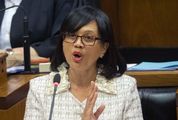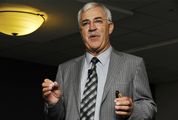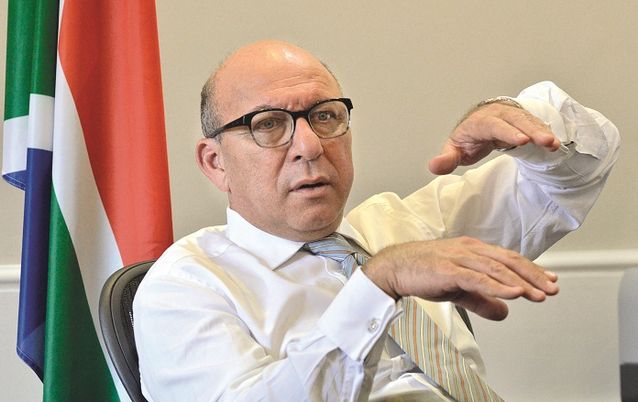NATIONAL Planning Commission chairperson and Minister of Planning in the Cabinet Trevor Manuel speaks to Carol Paton about how the plan came about and the challenges of making it a reality.
Where does the idea of the National Planning Commission come from?
In the past, the planning function was tied into the budget function, but it’s not always possible to deal with cross-cutting issues in the budget. So when cabinet was convened for this term of office, the president asked me if I would head a new planning function. The idea, at first, was based on the Indian model which would have seen a commission with about half a dozen cabinet ministers participating. But in discussions in the cabinet, the president suggested that it would be better to have commissioners drawn from outside government. He was concerned that the commission should be able to come at these issues without defending turf. He didn’t want a situation where the ability of the commission to take an independent view should be in any way curtailed.
And where did the vision come from … the ideal of what sort of society you wanted to build?
We didn’t need to create a new vision or dredge it up from somewhere, it was there in the Constitution, to some extent fulfilled but largely unfulfilled and that is what we took as a starting point.
When we took the values of the Constitution, the commitment made to improving the quality of life of every citizen and freeing the potential of each, we asked: can this find resonance in something we can measure? The two issues that popped out among all others were poverty and inequality. It was clear we would need a measure for each of those so they could be used as a touchstone for the output of the commission.
Now, if you construct a poverty line, then the commitment that you must make is that nobody must live below that line. Of course, in every country poverty lines are very hotly debated. So when all the technical work is put on the table, there is a negotiation not unlike a wage negotiation: government would like that line to be low; some of the non-government organisations would like it higher. So there is a negotiation and a settlement is reached.
(The commission recommended using a poverty line of about R418 per person per month in 2009 prices. This is based on a proposal from Statistics SA which takes into account the prices of a basket of food and other essential items.)
And inequality?
The inequality issue is a lot more complex. As people in a society accumulate skills, there are some skills that can lead to remuneration rising rapidly in a short space of time. So, with that, inequality grows. It is just in the nature of the challenge we are dealing with, apart from the fact that in the early stages of development of a society, inequality always grows. But having a measure for it is nonetheless fundamentally important.
(The commission uses the Gini co-efficient to measure inequality and set a goal of reducing this from 0.7 to 0.6 by 2030. This would be a "significant shift" but a high level of inequality would still persist by 2030, it says.)
So poverty and inequality were the "problems" and the plan the pathway to tackling them?
If you ask me about the broad thrust, what we did was to say: here is the constitution and we can drill down and then construct this place we have never been to, which is SA in 2030. It is prosperous, poverty is in the process of being progressively eradicated and the effects of apartheid and colonialism that have so scarred our society will over time be eliminated.
That is how we arrived at the nine challenges and through discussion and interactions with all sorts of people and groups out there we added four more. We debated those and thought that out of them all we needed to give priority to were jobs and education.
Does the plan have an ideological stance?
The short answer is no. The more complex answer is that the values of our Constitution are so shaped that we can’t leave people behind... But you know, I find the debate on ideology in this country somewhat frustrating: we attach a label to what we think we are and then the substance of the argument no longer matters.
The commission is diverse: there are people from business, people from trade unions and people all along the philosophical spectrum from Marx to Friedman. What we needed to do as a commission to hold or work together was to allow the evidence — harvested from research — to persuade us on what positions to take on what issues.
So the commission did things from an evidence-based approach. But we have a ruling party that is ideologically driven and doesn’t always value the evidence. How do you shift that way of doing things to an evidence-based approach?
With great difficulty. And I have realised just how hard it is because so much of the way people argue and debate is to attach a label to something and then to pillory it. The result is that when they argue, they don’t need data. But as the old adage goes: you have the right to your own opinion, but you don’t have the right to your own facts. So we need to make the facts available so that people can deal with the debates around these things differently.
So the plan is good, but how do you implement it?
Yes. Right now the plan is flying at 10,000 feet; implementation requires us to drop right down to 3,000 feet. Then we would have a different granularity and a different set of timelines. So it is a process of moving from being a plan formulated outside government to one that government begins to take on.
That is the big challenge: in the commission we carry the ideas for somebody else. So our ability to tie up the NDP with the department of performance monitoring and evaluation and with transversal departments like treasury and the department of public service and administration becomes fundamental. At a number of levels that relationship is working reasonably.
Implementation requires the ability to bring about measurable change. Measurement can be a big driver. But to do that you need data. So now we know where we want to go but we need to collect appropriate data.
To some extent work out of the department of performance monitoring and evaluation has made the instruments for measurement much sharper.
We are also finding that the experience of the Malaysian planning commission is very useful. Their approach is clear: everyone in an area of responsibility gets together and unpacks what is to be done. You leave the room only after weeks when everybody understands what their role is and what needs to be measured in performance.
So what is the difference between government’s policy making before we had the plan and after?
To give an example, when government and political party leaders say: "We must have a capable and developmental state," that is very different to the ideology which went before, which was, we need a developmental state and that is all. The school of government, for example, is part of that commitment. You have to take people and re-orient them and train them and build a focus on accountability.
One of the big problems in the public service is that there is aversion to change and innovation. So people will do things in the way they are comfortable until you have a change imposed from outside. That is something that depends on the quality of management.
So take the case of employment equity. In many of the smarter departments, people have been allowed to work their way through and out the system and as new appointments were made, there was then an emphasis on giving advantage to people who in the past were disadvantaged. But that requires a certain maturity of management. When you take the same power and hand it to local authorities ... people got fired and replaced with others with no experience or competence. So it is difficult in a system that is as rules-based as the public service to get innovation right.
You say there isn’t an ideological stance in the plan and that it is evidence-based, why then is there so much political contestation over it?
Because some of the opposition doesn’t like evidence. It is as basic as that and this is where I think we keep shooting ourselves in the foot.
What is the evidence? We have incredibly high unemployment. You can break it down by age, by geography. If you go out and speak to people who have jobs they will say to you: we make high wage demands, but I am not progressing. You ask why, they will say, well there are too many mouths to feed off my wage. If there were more jobs, then workers could raise their living standard. We need more jobs. That is the evidence and you can support it with a hell of a lot of data.
But trade unions are clearly more interested in defending their members....
One can understand the psychology of insider-outsider and why people hang on to what they have got, but it is important to use evidence to break through that. And the bulk of opposition has not been to the general issues in the plan but it has been about the employment stuff. There are a couple of issues that the trade unions raise and then argue that the whole plan should be rejected. The youth wage subsidy is one of those. The other is that the document doesn’t call for the banning of labour brokers! But this is not a Numsa document.
The third issue they raise is that we insist that there be probation in employment contracts. They say they have won the right to do away with probations in wage bargaining, why do we want to bring it back? But the Labour Relations Act is clear about this: it says when you take people into employment, you can minimise the risk and provide softer conditions. It is in such areas where the opposition is. And as they say – throw the baby out with the bathwater.
It is also important to keep in mind that when people were nominated for the 25 places on the commission, all three of the nominations made by Cosatu were successful. That was out of a total of about 1,300 people nominated.
In the ANC alliance meeting with Cosatu it was agreed that the economic chapter won’t be implemented....
I’m not losing sleep about that. The point about all of the work is that now people can take a view on how it all hangs together. People can look at it and try develop an understanding of what is happening in the lives of people. You can, for instance, look at wages, then look at the parasites that sit leeching off the lives of working people in the form of micro-lenders. So we see a situation where workers’ wage demands are increasing and the relationship between productivity and wages is being torn apart. But the quality of people’s lives is not improving. It is trying to fix those things that should be the essence of political discourse.
If we want to live out what is articulated in the NDP by 2030 we must have an economy that is three times the current size. In the 18 years since 1994, the economy has grown 2.5 times. But increasing it from this level is going to take a monumental effort. But if we don’t do that we will fail to create employment.
So we need to ask, what are the elements of that? What will our labour force need to look like? How do we utilise investment? In what kind of sectors can we grow employment and investment and why? These are the issues with which the economic chapter grapples.
You’ve given some indication you could leave government soon. What are your plans?
My broad approach is that the skills we have accumulated and acquired can’t belong to us as individuals…. I want to plough back. So part of what I want to do is spend time with young people and teach. And I do not think these ministerial jobs should be forever.
While that is true, the plan will nonetheless need a champion.
We are long past individual ownership of the NDP. We have argued vigorously against the notion of a "Manuel Plan", or any similar nomenclature. It is safe to say that cabinet collectively can, should and will champion its implementation. This is a constant.





















Change: -0.47%
Change: -0.61%
Change: 0.53%
Change: -0.42%
Change: -2.12%
Data supplied by Profile Data
Change: -0.46%
Change: -0.15%
Change: -0.47%
Change: 0.00%
Change: -0.20%
Data supplied by Profile Data
Change: -1.29%
Change: -1.30%
Change: -0.82%
Change: -1.44%
Change: -1.24%
Data supplied by Profile Data
Change: 0.66%
Change: 1.46%
Change: 1.51%
Change: 0.00%
Change: 0.89%
Data supplied by Profile Data